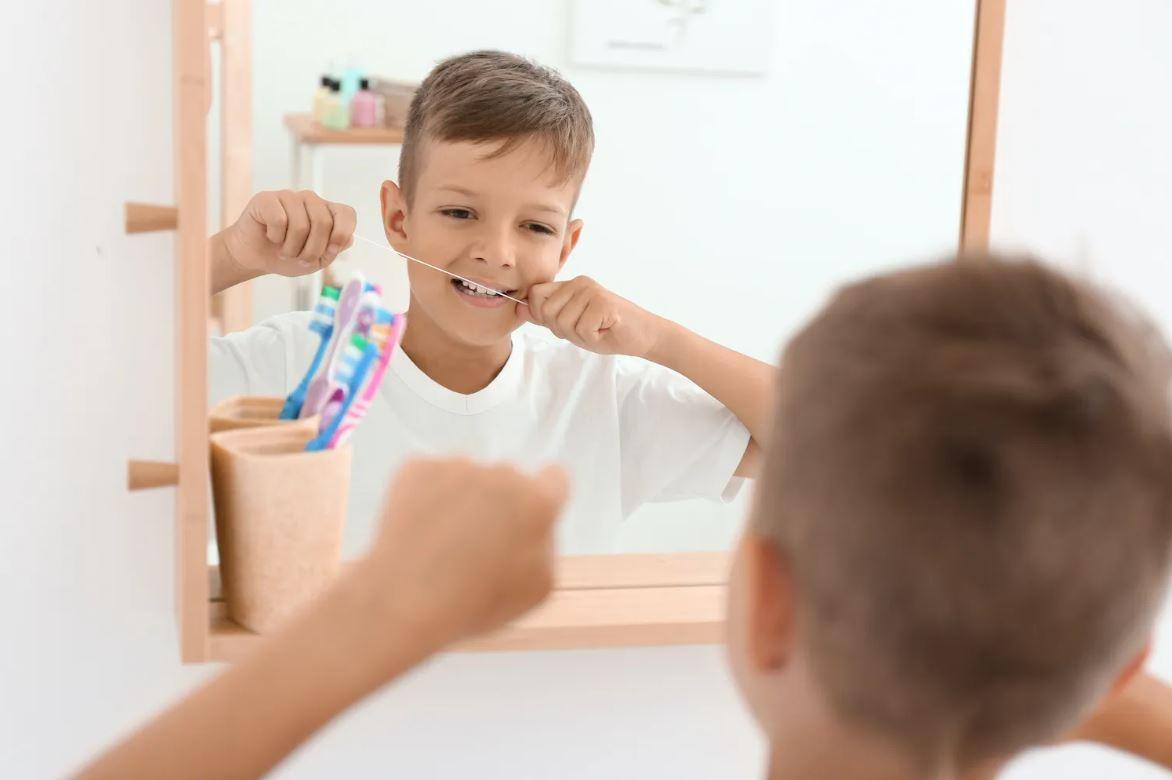
Brushing your child’s teeth is important, and twice daily brushing with fluoride toothpaste helps their smile stay healthy. But flossing is essential, too. Regular flossing allows you to further reduce your child’s risk of oral health issues like tooth decay and gum disease.
Not sure how to floss baby teeth? It’s easier than you may think! In this blog from Gary D. Sabbadini, DDS we’ll discuss everything you need to know about the process, and give you step-by-step instructions on what to do.
When Do I Need To Start Flossing My Child’s Teeth?
When your child only has a few teeth, you don’t really need to floss. Brushing alone will keep their teeth clean. But once your child’s teeth start to fit closely together, it’s best to start flossing.
This usually happens around the age of 2-3, when kids get all of their baby teeth. Kids usually have pretty big spaces between their front teeth, but flossing teeth that are touching is still a good idea, particularly for the rear teeth, which tend to have fewer gaps.
Flossing your child’s teeth from an early age will help them understand the importance of flossing, familiarize them with the process, and ensure they continue to floss regularly once they become responsible for their own oral hygiene.
How To Floss Your Child’s Teeth – Step-By-Step Instructions
First, brush your child’s teeth and then get them comfortable. You may find it easier to floss their mouth if they lay their head in your lap. Beyond this, flossing your child’s teeth is pretty similar to flossing adult teeth. Here’s a quick overview of the process.
- First, unspool a piece of floss that’s about 18-24 inches in length.
- Lightly wrap most of the floss around one of your middle fingers, and wrap a smaller amount around the other middle finger.
- Use your index fingers and thumbs to grasp a piece of floss that’s about 1 inch in length.
- Carefully move this piece of floss in between two of your child’s teeth. Bring the floss up and down gently, and bend it to form a “C” shape on the side of each tooth.
- Gently pull the floss out from between your child’s teeth. Unspool and pinch another 1-inch length of floss, and then repeat this process until all of your child’s teeth have been flossed.
When Can My Child Floss On Their Own?
Learning how to floss is tough for most adults! So, naturally, it’s harder for kids to learn, too. Most kids can start brushing on their own at about the age of 7-8, but they usually can’t floss on their own until they’re about 8-10 years old. Flossing requires significantly more manual dexterity.
If you’d like your child to floss on their own earlier, you can consider buying floss picks. These are small, plastic handles that support a piece of dental floss. They are disposable, and are a lot easier for kids to use.
Dentists consider floss picks to be less effective than string floss, but they’re still much better than not flossing at all, so they’re a great option if you’d like your child to floss on their own, but they’re not quite capable of using string floss. We still recommend switching to string floss once your child can learn how to use it properly, though.
Keep Your Child’s Mouth Healthy With Routine Visits To Gary D. Sabbadini, DDS
Great at-home oral hygiene is essential for your little one’s oral health, but so are six-month check ups in Pinole. Whether you’re new to the area, looking for a new dentist, or are just overdue for your child’s next appointment, Dr. Gary Sabbadini is here for you!
As a board-certified pediatric dentist, Dr. Gary can ensure your child’s mouth is healthy, give you tips and advice on at-home oral care, and protect their teeth and gums for years to come. Book an appointment online or give us a call at (510) 724-4400 to get started.





